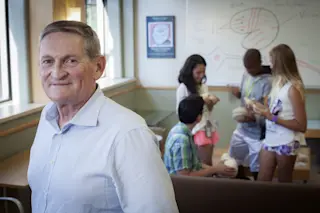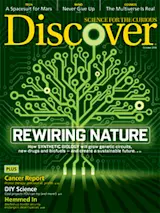Kids say the darndest things when they’re reviewing a neuroscience study up for publication.
That’s what Bob Knight discovered when, almost on a whim, he started a kid-reviewed online journal — and found his passion.
Knight ran the Helen Wills Neuroscience Institute at the University of California, Berkeley, for a decade and was the founding editor of the online, open-access journal Frontiers in Human Neuroscience. His pages-long list of published studies is the envy of any academic, but Knight still has the straight-talking style and self-deprecating wit of a kid who grew up on the blue-collar Jersey shore.
It’s Knight’s combination of endless intellectual curiosity and down-to-earth realism that led him to start Frontiers for Young Minds in 2013. He wanted to inspire the next generation of researchers, but on their own terms.
Like the rest of the Frontiers series, the journal is online and open access, but Frontiers for ...















